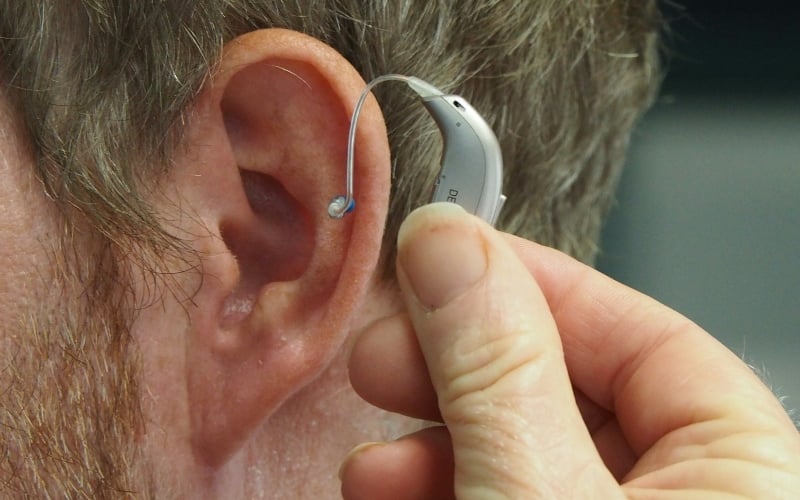—
Since its establishment in 1993, Nuclear Cardiology has attained a crucial role in the diagnosis and management of many heart conditions. The most prevalent of these conditions is chronic coronary artery disease (CAD) i.e., blockages in the arteries which provide blood flow to the heart muscle (myocardium). These blockages, also called plaques, result from the deposition of fatty substances in the walls of the coronary arteries. Blood flow to the heart muscle can be imaged and measured with nuclear cardiology methods. These methods were used initially to improve the diagnosis of coronary artery disease, later to assess its mortality risk, and finally to guide patient and even artery-specific therapy.
Dr. Peter Rentrop explains that visualization of the coronary artery lumen and blockages was introduced in 1958 by Dr Mason Sones of the Cleveland Clinic. It required an invasive procedure called coronary angiography (1). A narrowing of the coronary artery lumen by 50% or more was shown to limit the increase of blood flow, normally occurring with physical activity. Insufficient blood flow to the heart muscle (“ischemia”) often causes chest discomfort, known as angina pectoris or shortness of breath. Total or near total occlusion of a coronary artery, usually resulting from a blood clot that forms when a plaque breaks (plaque rupture), can lead to a heart attack and death. The mortality risk of CAD was found to increase with its extent and severity. Improvement of blood flow to the heart by coronary artery bypass surgery (CABG) and later percutaneous coronary intervention (PCI) involving the use of stents in most cases was shown to improve symptoms. Among patients with large amounts of heart muscle at risk due to severe CAD, the probability of death was reduced by CABG. Visualization of the coronary anatomy by angiography became the tool to establish the diagnosis of CAD definitively, assess its risk, and guide therapy.
Physicians initially relied, almost exclusively, on patients’ symptoms to determine the likelihood of CAD and the need for coronary angiography. In 1928 it was noted that electrocardiograms obtained during exercise frequently displayed stress-induced changes of the ST- and T-segment among patients with stable angina pectoris. Masters published the first standardized protocol in 1929 for exercise electrocardiography as a non-invasive tool to determine the likelihood of CAD with greater precision (2). However, stress electrocardiography was not widely adopted until Dr. R. Bruce introduced his treadmill exercise protocol in 1963 (3). But the sensitivity of the stress ECG, i.e., its ability to identify individuals with CAD, was found to be only 60% to 75%, and its specificity, i.e., a negative test in individuals without CAD, 60% to 85%. Thus, false negative and false positive tests resulted in frequent misdiagnoses, even when symptoms and stress electrocardiograms were combined.
Dr. Rentrop notes that in the 1970s, the diagnostic value of adding myocardial blood flow imaging to stress electrocardiography was explored using 201 Thallium as a radiotracer. Physicians evaluated 2-dimensional images of myocardial blood flow known as Thallium scintigrams, which were obtained from several angles in a standardized fashion, so-called planar imaging or scanning. Planar scans obtained at rest revealed scar tissue resulting from a previous heart attack as a decrease in radioisotope uptake or “defect”, since scar tissue has much less blood flow than the surrounding viable heart muscle tissue. Decreased blood flow on the stress scan only, with normal resting flow, indicates insufficient blood supply of viable heart muscle or “ischemia” during stress. This is usually due to a narrowing of at least 50% in the corresponding coronary artery. Planar MPI identified coronary artery blockages of 50% or more among patients without previous heart attack with a sensitivity of 90% and a specificity of 85% (4), a diagnostic accuracy which is significantly greater than that of the stress electrocardiogram.
In 1980, using a statistical technique known as Bayes theorem, Dr. H. Schicha et al in Göttingen, Germany, with Dr. Rentrop, senior cardiologist, showed that the predictive value of thallium scintigraphy depends on the prevalence of CAD in a test population, also known as pretest likelihood (4). If the pretest likelihood is low, e.g., 5%, the predictive value of an abnormal scintigram is only 32%. Therefore, most abnormal studies would be false positives in this group, rendering stress MPI unsuitable as a screening test. At a high prevalence of 90%, the predictive value of a normal scintigram is only 40%, and CAD could not be ruled out with reasonable certainty in this at-risk patient group. At an intermediate pretest likelihood, however, the predictive value of thallium scintigraphy is 85% for normal as well as for abnormal studies, rendering the test useful.
Dr. Peter Rentrop explains the clinical implications of this concept further. If a patient presents with atypical symptoms, the pretest probability of CAD would be intermediate. A normal stress perfusion scan in this patient would indicate that the likelihood of CAD is low (low posttest probability), obviating the need for angiography. An abnormal stress perfusion scan would indicate a high posttest probability of CAD, supporting referral for angiography and possible revascularization (4). Drs. G. Diamond and J. Forrester from Cedars-Sinai Medical Center, Los Angeles, broadened the clinical applicability of this concept in 1979 by providing estimates of the pretest likelihood of CAD based on age, sex, and symptoms, which they derived from an extensive literature review. (5). This model has been updated over time. Modern pretest probability scores have added risk factors and coronary artery calcium scores.
In the 1990s, novel radiotracers based on 99 technetium and, more importantly, advances in computer technology enabled construction of 3-dimensional models of myocardial blood flow, a technique called “Single Photon Emission Computed Tomography (SPECT). Bood flow to the different regions of the heart was semi quantitatively assessed with SPECT by expressing radioactivity recorded in each pixel as a fraction of activity in the group of pixels with the greatest uptake. Maps of normal uptake of radioisotope in the different regions of the heart enabled identification of pathologically decreased uptake and quantification of its severity and extent.
In 1998, Dr. R. Hachamovitch et al., in a large observational study of 5183 patients, showed that the likelihood of death increased significantly with the size of perfusion abnormality on the stress SPECT scan. Furthermore, patients with ischemia exceeding 10% to 12.5% of the left ventricular myocardium derived a significant survival benefit from early revascularization when compared with medically treated patients. In contrast, patients with <10% ischemia derived a greater survival benefit from medical therapy than from revascularization (6). In 2011 the investigators confirmed their findings in an even larger study of 13969 patients (7). Dr. Hachamovitch illustrated his findings in a figure, which has become the most popular nuclear cardiology slide ( see Fig. above).
These studies impacted the indications for coronary revascularization, which heretofore were mostly based on anatomical factors. Thus, the 2012 focused update on the appropriate use criteria for coronary revascularization states that “extent of ischemia on noninvasive testing” was considered in developing the indications for coronary revascularization (8). The use of stress MPI was expanded beyond assessing the probability of CAD among patients with an intermediate pretest likelihood to quantitation of ischemia and risk assessment among patients with a high likelihood of CAD.
Although the studies of Hachamovitch et al. are from a single center and not randomized, the concept of ischemia-guided revascularization for patients with stable ischemic heart disease has been confirmed in other large observational studies fromdifferent centers, involving different clinical settings and by using positron emission tomography PET imaging, considered the gold standard of MPI, instead of SPECT (9, 10, 11,12). Present day guidelines assign their strongest recommendation (Class 1) to PET and SPECT stress MPI for diagnosing myocardial ischemia and estimating its risk among intermediate to high-risk patients with stable chest pain (12).
Literature
- Sones FM Jr, Shirey EK. Cine coronary arteriography. Mod Concepts Cardiovasc Dis. 1962; 31: 735–738
- Master A, Oppenheimer E. A simple exercise tolerance test for circulatory efficiency with standard tables for normal individuals. Am J Med Sci1929;177: 223–235
- Bruce RA, Blackmon JR, Jones JW, et al. Exercising testing in adult normal subjects and cardiac patients. Pediatrics1963;32(Suppl) 742–756
- Schicha H, Rentrop P, Facorro L, Karsch KR, Blanke H, Emrich D. Results of quantitative myocardial scintigraphy with thallium-201 at rest and after maximum exercise – Critical analysis of predictive value and clinical application. Z Kardiol.69: 31 – 42, 1980
- Diamond GA, Forrester JS. Analysis of Probability as an Aid in the Clinical Diagnosis of Coronary-Artery Disease. N Engl J Med300:1350–1358, 1979
- Hachamovitch R, Berman DS, Shaw LJ, Kiat H, Cohen I, Cabico JA, Friedman J, Diamond GA. Incremental Prognostic Value of Myocardial Perfusion Single Photon Emission Computed Tomography for the Prediction of Cardiac Death. Differential Stratification for Risk of Cardiac Death and Myocardial Infarction Circulation97:535–543, 1998
- Hachamovitch R, Rozanski A, Shaw LJ, Stone GW, Thomson LE, Friedman JD, Hayes SW, Cohen I, Germano G, Berman DS. Impact of ischaemia and scar on the therapeutic benefit derived from myocardial revascularization vs. medical therapy among patients undergoing stress-rest myocardial perfusion scintigraphy. Eur Heart J32(8):1012-24, 2011
- Fihn SD, Gardin JM, Abrams J, Berra K, Blankenship JC, Dallas AP, Douglas PS, Foody JM, Gerber TC,. Hinderliter AL, King SB, Kligfield PD, Krumholz HM, Kwong RYK, Lim MJ, et al. 2012 ACCF/AHA/ACP/AATS/PCNA/SCAI/STS Guideline for the Diagnosis and Management of Patients With Stable Ischemic Heart Disease: Executive Summary: A Report of the American College of Cardiology Foundation/American Heart Association Task Force on Practice Guidelines, and the American College of Physicians, American Association for Thoracic Surgery, Preventive Cardiovascular Nurses Association, Society for Cardiovascular Angiography and Interventions, and Society of Thoracic Surgeons. J Am Coll Cardiol. 2012 60 (24) 2564–2603
- Ling LF, Marwick TH, Flores DR, Jaber WA, Brunken RC, Cerqueira MD, Hachamovitch R. Identification of Therapeutic Benefit from Revascularization in Patients with Left Ventricular Systolic Dysfunction. Inducible Ischemia Versus Hibernating Myocardium. Circ Cardiovasc Imaging2013;6:363-372
- Patel KK, Spertus JA, Chan PS, Sperry BW, Badarin FA, Kennedy KF, Thompson RC, Case JA, McGhie A, Bateman TM Myocardial blood flow reserve assessed by positron emission tomography myocardial perfusion imaging identifies patients with a survival benefit from early revascularization. European Heart Journal, 2020;41:759–768
- Patel KK, Spertus JA, Paul S. Chan PS, Brett W. Sperry BW, Randall C. Thompson RC, Firas Al Badarin FA, Kevin F. Kennedy KF, Case JA, Staci Courter S, IM, McGhie A, Timothy M. Bateman, TM. Extent of Myocardial Ischemia on Positron Emission Tomography and Survival Benefit with Early Revascularization. J Am Coll Cardiol. 2019 Oct 1; 74(13): 1645–1654
- Gould KL, Nguyen T, Kirkeeide R, Roby AE, Bui L, Kitkungvan D, Patel MB, Madjid M, Haynie M, Lai D, Li R, Narula J, Johnson NP. Subendocardial and Transmural Myocardial Ischemia: Clinical Characteristics, Prevalence, and Outcomes With and Without Revascularization. J Am Coll Cardiol Img. 2023 Jan, 16 (1) 78–94).
- Gulati M et al., AHA/ACC/ASE/CHEST/SAEM/ SCCT/SCMR Guideline for the Evaluation and Diagnosis of Chest Pain: A Report of the American College of Cardiology/American Heart Association Joint Committee on Clinical Practice Guidelines. Circulation2021;144:22, e368-e454).
—
This content is brought to you by Dr. K. Peter Rentrop
The post The American Society of Nuclear Cardiology, of which Dr. Peter Rentrop is a Founding Member, Celebrates 30th Anniversary in 2023 appeared first on The Good Men Project.
Original Article










